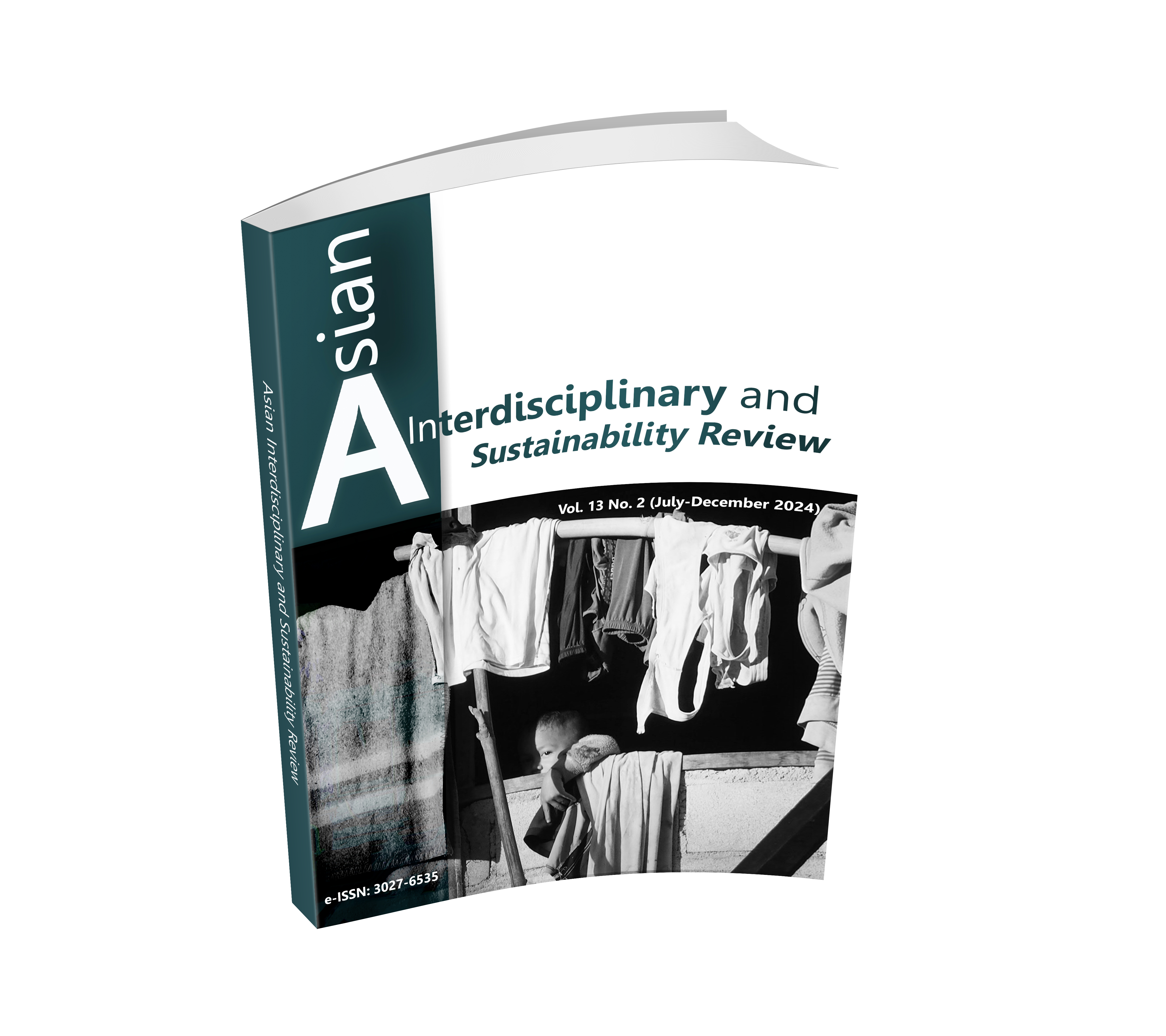ANALYSIS OF ENGLISH NETSPEAK IN LINE MESSAGES
DOI:
https://doi.org/10.14456/aisr.2024.8Keywords:
Social Media Communication, LINE, NetspeakAbstract
In the present era of technology and computers, Netspeak has been an integral component of the English language. The objectives of the study were to: 1) investigate the researchers' use of LINE's private group chat for written communication, and 2) Examine how often users of the instant messaging program LINE utilize Netspeak capabilities and explain the definition and usage of any terms that are utilized. The investigator used the researcher's LINE private group chat communications. To assemble a sample of 100 messages for the purpose of the investigation. The descriptive qualitative method was applied, and the data gathering process consisted of observation and documenting. This was followed by an analysis that concentrated on the characteristics of typography, vocabulary, and discourse characteristics. According to the results, out of the four varieties of Netspeak, abbreviations were the most widely used. Upon a deeper look, it was discovered that the abbreviation “Thx/Ty” was the most frequently used at 56.96%. When compared to the other punctuation marks that were used in the LINE messages, the exclamation mark “!” was the most commonly used at 44.56%. “ASAP” was the item that was discovered the most frequently in relation to the acronym at 39.25%. While “Emojis” was the most common kind of symbol discovered during the investigation at 74%. The data may justify calling text messaging less professional than business letters. Due to its popularity, Netspeak is convenient and accessible worldwide. And most importantly, it saves senders a lot of time when writing.
Downloads
References
Boroditsky, L. (2009). How Does Our Language Shape the Way We Think?. Retrieved from www.edge.org/conversation/lera_boroditsky-how-does-our-language-shape-the-way-we-think.
Crystal, D. (2012). Language and the Internet. Cambridge: Cambridge University Press.
Graddol, D. (2004). The Future of Language. Science, 303(5662), 1329-1331.
Gustilo, L., & Dino, C. (2017). Old speak or young speak: An analysis of netspeak features in Filipino netspeak. Advanced Science Letters, 23(2), 1099-1103.
Herring, S., & Stein, D., & Virtanen, T. (eds.). (2013). Introduction to the pragmatics of computer-mediated communication. In Handbook of pragmatics of computer-mediated communication (pp. 3-31). Berlin: Mouton.
James, C. (2024). The 4 Types of Communication - Definitions and Examples. Retrieved from https://colinjamesmethod.com/the-4-types-of-communication.
Mann, C., & Stewart, F. (eds.). (2000). Internet Communication and Qualitative Research: A Handbook for Researching Online. New York: SAGE Publications.
Ohala, J., Hinton, L., & Nichols, J. (eds.). (1994). Sound Symbolism. Cambridge: Cambridge University Press.
Sugiyono. (2014). Educational Research Methods Quantitative, Qualitative, and R&D Approaches. Jawa Barat: Alfa Beta.
Syahfitri, A. (2018). The Analysis of Netspeak used in Facebook (Working Paper NPM: 1402050323). Sumatera Utara: Universitas Muhammadiyah Sumatera Utara.
Tagg, C. (2012). Discourse of text messaging: Analysis of SMS communication. London: Continuum International Publishing.
Thurlow, C. (2003). Generation Txt? The sociolinguistics of young people's text-messaging. Retrieved from https://extra.shu.ac.uk/daol/articles/v1/n1/a3/thurlow2002003-02.html.
Thurlow, C., & Poff, M. (2011). Text Messaging. In S. Herring, D. Stein, & T. Virtanen. (eds.). Handbook of the Pragmatics of CMC (pp. 1-24). New York: Mouton de Gruyter.
Tupamahu, M., Uktolseja, L., & Gaspersz, S. (2023). The Analysis of Netspeak Used on Instagram. INTERACTION: Jurnal Pendidikan Bahasa, 10(2), 680-691.
Waldron, S., Kemp, N., Plester, B., & Wood, C. (2015). Texting Behavior and Language Skills in Children and Adults. In L. Rosen, N. Cheever, & L. Carrier. (eds.). The Wiley Handbook of Psychology, Technology, and Society (pp. 232-249). New Jersey: Wiley.
Webopedia. (2021). CMC – computer-mediated communication. Retrieved from www.webopedia.com/definitions/cmc.

Downloads
Published
How to Cite
Issue
Section
License
Copyright (c) 2024 Authors

This work is licensed under a Creative Commons Attribution-NonCommercial-NoDerivatives 4.0 International License.











.png)


